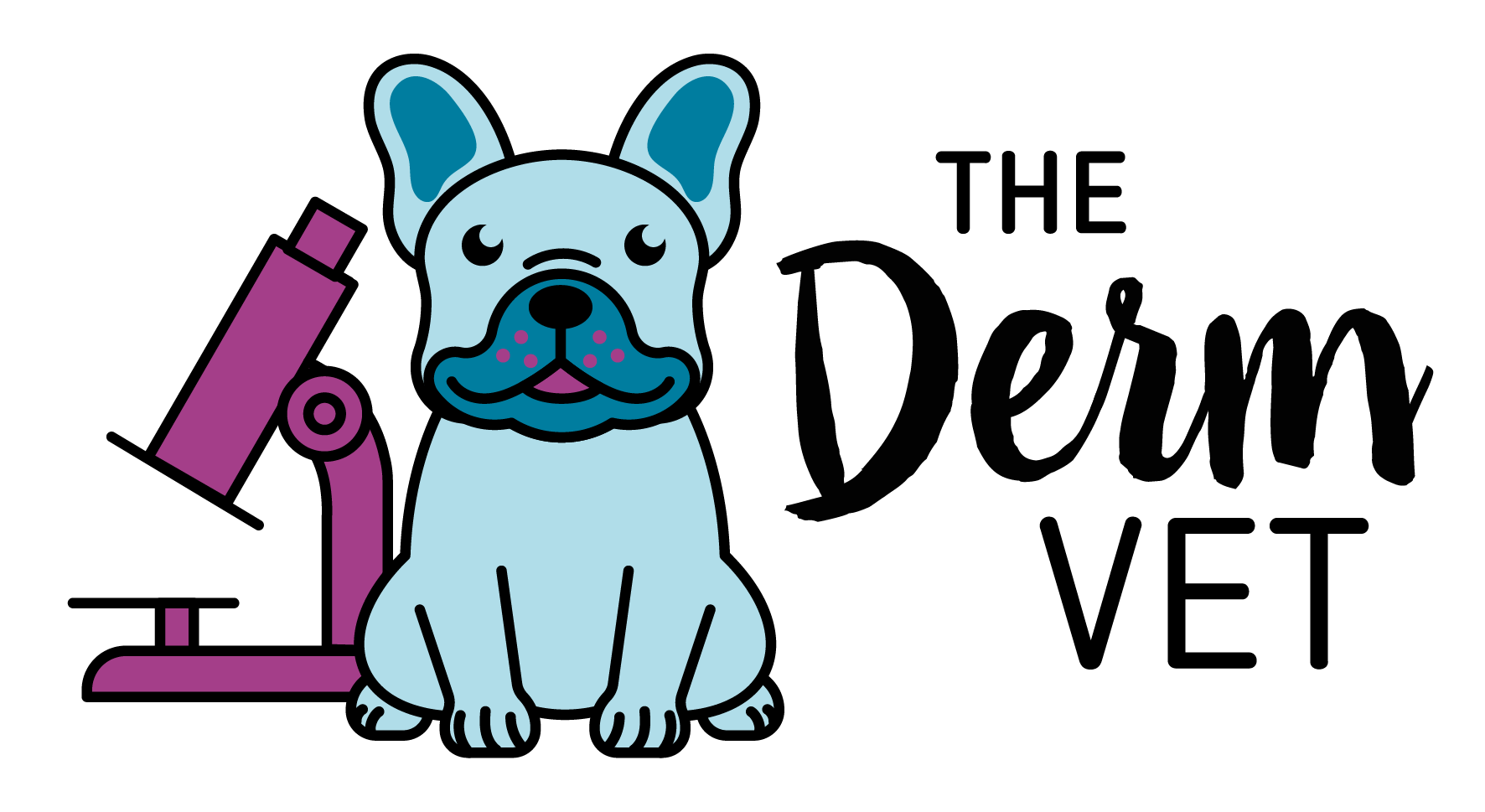As a general practitioner, you see itchy, infected pets all day long. But, when do you decide to make the referral to a dermatologist? Every veterinarian is going to have a different comfort level with managing chronic, allergic pets. Every client is going to have a different threshold for getting a specialist involved with their pet. However, there are some basic guidelines that can be used for when referral can fit into your recommendations. These are discussed in more detail on episode 93 of The Derm Vet podcast.
- When recurrent infections start occurring
• One of the hardest things we deal with in veterinary dermatology is the rise of
multi-drug resistant bacteria. Whether we are seeing cases of Pseudomonas sp. otitis or methicillin-resistant Staphylococcus sp. pyoderma, cultures are showing more and more limitations for antibiotic options. Alternatives such as dilute bleach have to be used in really difficult cases which can be a big time commitment for the owner. A frustrated owner can benefit from hearing another veterinarian talk through their pet’s long-term management. - Those not-so-typical lesions
• Not every itchy pet is allergic. Hints that you might be dealing with a non-allergic
case include a depigmented nasal planum, ulcerated mucous membranes and cutaneous nodules. These can be indications you may be dealing with an autoimmune or neoplastic skin process. Many of these diseases will initially improve with the use of corticosteroids. An appropriate diagnosis is necessary to assure appropriate therapies (such as azathioprine or mycophenolate) are started if needed. - Proactive owners willing to pursue allergy testing and allergen specific immunotherapy (ASIT)
• ASIT consists of - Challenging allergy or pyoderma cases where more than one anchor therapy required • Some allergy and recurrent pyoderma cases can be difficult. If more than three
infections are occurring a year or an allergic case is no longer controlled by anti- pruritics, referral can be a great suggestion. If a single antipruritic or anti- inflammatory therapy is not controlling allergic signs, then dermatology referral is a great way to allow a fresh view on the case. This may include pursuing ASIT, epidermal barrier therapies, nutritional support, etc. Also, a dermatologist can help ensure that there are not numerous allergies present or a non-allergic disease that may be complicating things.
Develop a relationship with your local dermatologist because many cases need to be co- managed. Also, you can discuss cases before referring them to maximize diagnostic results upon initial examination. If you don’t have a dermatologist in your area there are telemedicine companies (VetNOW, Televet, etc.) available that provide consultation options regardless of your location.
This podcast was sponsored by Zoetis, the makers of treatments including Apoquel® (oclacitinib tablet), Apoquel® Chewable (oclacitinib chewable tablet), and Cytopoint®. Zoetis is dedicated to changing the way we approach canine pruritus to benefit the pet, the owner and the veterinary team. Visit Apoquel.com and Cytopoint.com for more information.
APOQUEL & APOQUEL CHEWABLE -IMPORTANT SAFETY INFORMATION
Do not use Apoquel or Apoquel Chewable in dogs less than 12 months of age or those with serious infections. Apoquel and Apoquel Chewable may increase the chances of developing serious infections, and may cause existing parasitic skin infestations or pre- existing cancers to get worse. Consider the risks and benefits of treatment in dogs with a history of recurrence of these conditions. New neoplastic conditions (benign and malignant) were observed in clinical studies and post-approval. Apoquel and Apoquel Chewable have not been tested in dogs receiving some medications including some commonly used to treat skin conditions such as corticosteroids and cyclosporines. Do not use in breeding, pregnant, or lactating dogs. Most common side effects are vomiting and diarrhea. Apoquel and Apoquel Chewable have been used safely with many common medications including parasiticides, antibiotics and vaccines. For more information, please see the full Prescribing Information at apoqueltabletandchewablepi.com.
1. DeBoer, D.J. (2017), The future of immunotherapy for canine atopic dermatitis: a review. Vet
Dermatol, 28: 25-e6. https://doi.org/10.1111/vde.12416
Apoquel & Apoquel Chewable Indications: Control of pruritus (itching) associated with allergic dermatitis and control of atopic dermatitis in dogs at least 12 months of age.
Cytopoint Indications: Cytopoint has been shown to be effective for the treatment of dogs against allergic dermatitis and atopic dermatitis.


